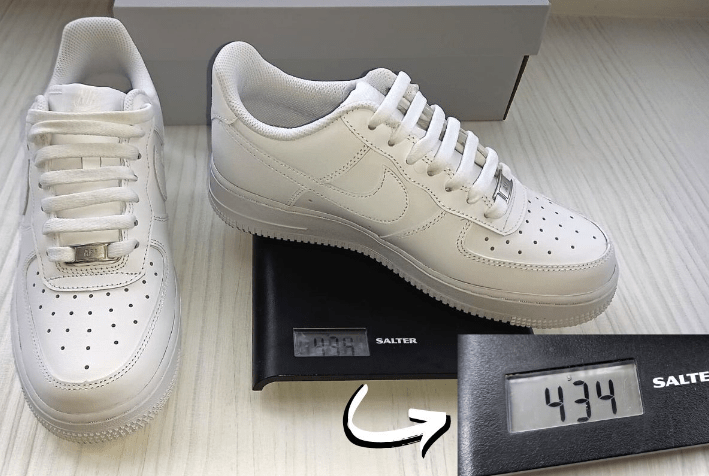Have you ever wondered how much does a pair of shoes weigh? An intriguing question, indeed! Shoes, whether dress shoes, running shoes, hiking boots, or high heels, are a vital part of our daily lives. Their weight impacts not just our comfort but also our athletic performance and overall health. As experts in the field, we bring you a comprehensive guide to the fascinating world of shoe weight.
Understanding Shoe Weight: More Than Just a Number

Let’s start by establishing the basics. The average shoe weight can vary considerably, ranging from about 200 grams (7 ounces) for a lightweight running shoe to over 1000 grams (35 ounces) for a pair of heavy-duty work boots. A multitude of factors contribute to these differences, such as material, size, design, and purpose.
Weight of Popular Shoe Brands: A Comparative Analysis

When it comes to the weight of popular shoe brands, there’s a vast range of diversity. Athletic brands, such as Nike and Adidas, lean towards lightweight designs for most of their running and training shoes. On the other hand, sturdy brands like Red Wing or Timberland often have a significantly higher shoe weight due to their focus on durability and protection.
Shoe Weight and Comfort: The Unmissable Link

There’s an undeniable relationship between shoe weight and comfort. Lightweight shoes can minimize foot fatigue and enhance the ease of movement, making them the go-to choice for athletes and regular joggers. Meanwhile, heavier shoes, often equipped with enhanced cushioning and supportive features, are suitable for workers who need to protect their feet in challenging environments.
Shoe Weight and Athletic Performance: The Critical Balance
When it comes to athletic performance, shoe weight can be a game-changer. Lightweight shoes can help improve running efficiency and reduce energy expenditure. However, it’s crucial to remember that lighter shoes may not always offer the required stability and cushioning needed for some sports. Thus, the choice of shoe weight for athletic performance should be based on a balance between lightness and functionality.
Shoe Weight and Foot Health: A Healthy Footprint
Another important aspect to consider is the impact of shoe weight on foot health. Heavier shoes can sometimes lead to unnecessary strain on the joints, while extremely lightweight shoes might lack necessary support. Therefore, it’s essential to strike a balance between weight and support for optimal foot health.
How to Measure Shoe Weight: Simple Steps for Accuracy
To measure shoe weight, a digital kitchen scale often suffices. Make sure to weigh both shoes, as slight variations may occur between them. Also, remember to take note of the shoe size, as larger sizes will inherently weigh more.
Shoe Weight and Durability: A Robust Relationship
A common misconception is that heavier shoes are more durable than lighter ones. In reality, durability largely depends on the quality of materials and the shoe’s construction. So, while some heavy-duty boots are incredibly long-lasting, a well-made lightweight athletic shoe can also exhibit exceptional durability.
Shoe Materials and Weight: The Building Blocks of Shoes
Materials used in shoe construction significantly impact their weight. Leather and synthetic materials can add heft, whereas textiles like mesh and canvas usually make for a lighter shoe. Innovative materials, such as foam composites and lightweight rubbers, are also revolutionizing the shoe industry by providing lightweight, durable alternatives.
Shoe Weight and Walking/Running Efficiency: The Weight of Performance
It’s worth noting that the weight of your shoes can impact your walking and running efficiency. Lighter shoes typically require less energy per stride, allowing for more efficient movement. However, weight should not be the only consideration – the shoe’s design, support, and cushioning are equally important for optimal performance.
Shoe Weight and Hiking/Traveling Comfort: Light Steps on the Trail
For hiking and traveling, shoe weight can significantly impact comfort levels. Heavy boots can cause fatigue over long distances, while lightweight trail shoes might lack the necessary protection and support. Consider the terrain, distance, and your personal comfort when choosing the weight of your hiking footwear.
Tips to Reduce Shoe Weight: Lightening Your Steps
If you’re looking to reduce shoe weight, consider options with minimalistic designs and lightweight materials. Also, replacing heavy insoles with lighter alternatives can make a noticeable difference. However, remember not to compromise essential features like support and cushioning in the pursuit of weight reduction.
The Influence of Shoe Size on Weight: A Matter of Scale
When discussing shoe weight, it’s important to note that size plays a significant role. A larger shoe will naturally weigh more than its smaller counterpart, simply due to the additional material used. For example, a men’s size 8 running shoe might weigh around 250 grams (8.8 ounces), while a size 12 of the same model could weigh up to 350 grams (12.3 ounces). Therefore, when comparing shoe weights, it’s crucial to consider the sizes being compared.
Shoe Weight Variance Among Children’s Footwear: A Lightweight Discussion
Delving into the realm of children’s shoes, the weight is considerably less compared to adult footwear. Children’s shoes are typically designed to be lightweight and flexible, supporting the natural growth and development of a child’s foot. On average, a pair of children’s shoes could weigh anywhere between 100 and 300 grams (3.5 to 10.6 ounces), depending on the size and style of the shoe.
Weight Variations in Work Footwear: Heavy-Duty Considerations
Work boots, particularly those designed for industries like construction or manufacturing, tend to be heavier due to their robust construction and safety features. Steel-toed work boots, for instance, can weigh over 1000 grams (35 ounces) per shoe, given the additional weight of the steel cap. However, advancements in technology have introduced lighter, yet equally protective alternatives like composite materials for toe protection, bringing down the overall weight of safety footwear.
Comparison Between Traditional and Minimalist Running Shoes: A Weighty Debate
In the realm of running shoes, there’s an ongoing debate between traditional and minimalist footwear. Minimalist running shoes, often featuring reduced cushioning and a zero-drop design, tend to be lighter, usually weighing under 200 grams (7 ounces). On the other hand, traditional running shoes, with more cushioning and support structures, often weigh between 250 and 400 grams (8.8 to 14.1 ounces). While weight is a consideration, runners should prioritize comfort, fit, and personal running style when choosing between these two types.
Pondering the Weight of Specialty Shoes: Every Gram Counts
Specialty shoes, such as ballet slippers, cycling shoes, or climbing shoes, also come with their unique weight considerations. For example, ballet slippers are extremely lightweight, often under 100 grams (3.5 ounces), to facilitate the dancer’s movements. Conversely, cycling shoes, designed to maximize power transfer to the pedals, are heavier due to their rigid soles, often weighing up to 700 grams (24.7 ounces) or more.
The Environmental Impact of Shoe Weight: A Sustainable Step
Finally, it’s essential to acknowledge the environmental perspective of shoe weight. Lighter shoes require less material to produce and, consequently, can have a smaller carbon footprint. Additionally, the trend towards lightweight shoes has stimulated the development of innovative, eco-friendly materials. For example, recycled plastics, organic cotton, and sustainably harvested rubber are increasingly used in shoe production, further contributing to reduced environmental impact.
As we’ve discovered, the topic of shoe weight is both broad and profound. From influencing comfort and performance to impacting the environment, every gram holds significance. It’s not merely about ‘how much a pair of shoes weigh,’ but also ‘why they weigh as much as they do,’ and ‘how does that weight impact us and the world around us.’ We trust this comprehensive guide has enlightened you on the intriguing world of shoe weight, enabling you to step forward with greater knowledge and confidence. Remember, in every step you take, you carry the weight of choice. Choose wisely!
Frequently Asked Questions About How Much Does a Pair of Shoes Weigh?
What is the average weight of men’s dress shoes?
The average weight of men’s dress shoes can range from 800 to 1200 grams (28 to 42 ounces), depending on the size and material.
How much does a pair of running shoes weigh?
Running shoes are typically lightweight, often weighing between 200 and 500 grams (7 to 17 ounces).
How does the weight of athletic shoes affect performance?
Lighter athletic shoes can improve running efficiency and speed, while heavier shoes may provide better support and stability, depending on the specific sport.
Are lightweight shoes suitable for long-distance running?
Yes, lightweight shoes can be beneficial for long-distance running by reducing energy expenditure, but they should also provide sufficient cushioning and support.
What is the typical weight of women’s high heels?
Women’s high heels usually weigh between 500 and 800 grams (17 to 28 ounces), depending on the heel height and material.
Also Read: Why is Goat Taking So Long to Verify My Shoes?
Conclusion
In conclusion, the weight of a pair of shoes is influenced by a multitude of factors and can significantly affect comfort, performance, and health. Our understanding of shoe weight is evolving, as new materials and designs are continuously being developed. So next time you pick up a pair of shoes, consider the weight – it might just tip the scales in favor of your perfect shoe experience.
To conclude, our aim with this article on “How Much Does a Pair of Shoes Weigh?” has been to equip you with the necessary tools and knowledge to make informed decisions and overcome any challenges you may encounter.










